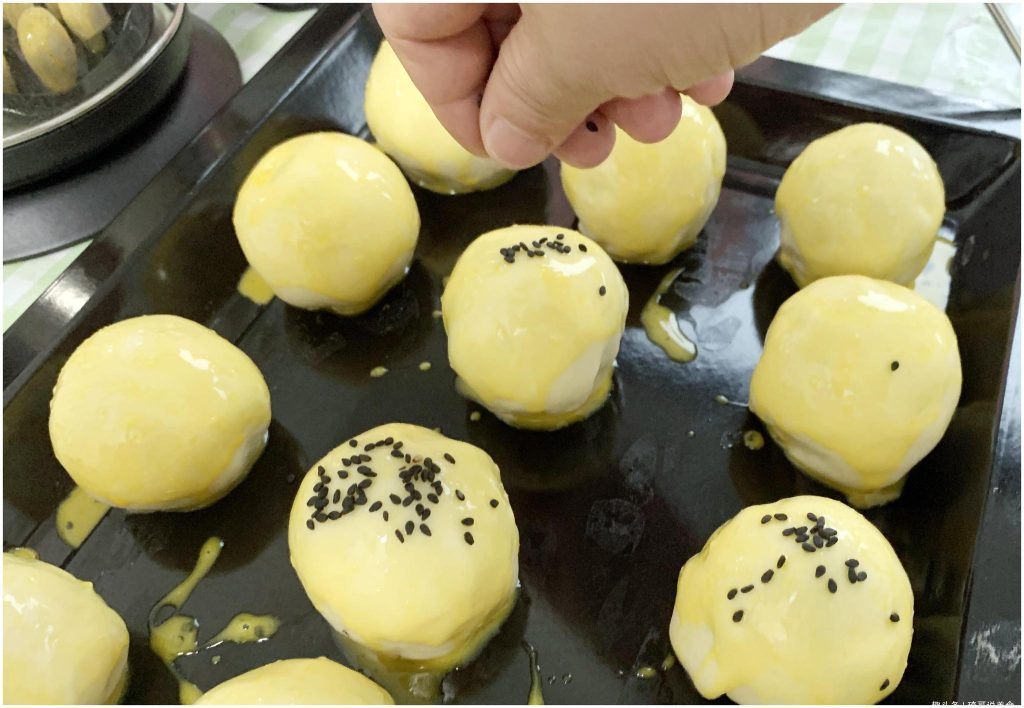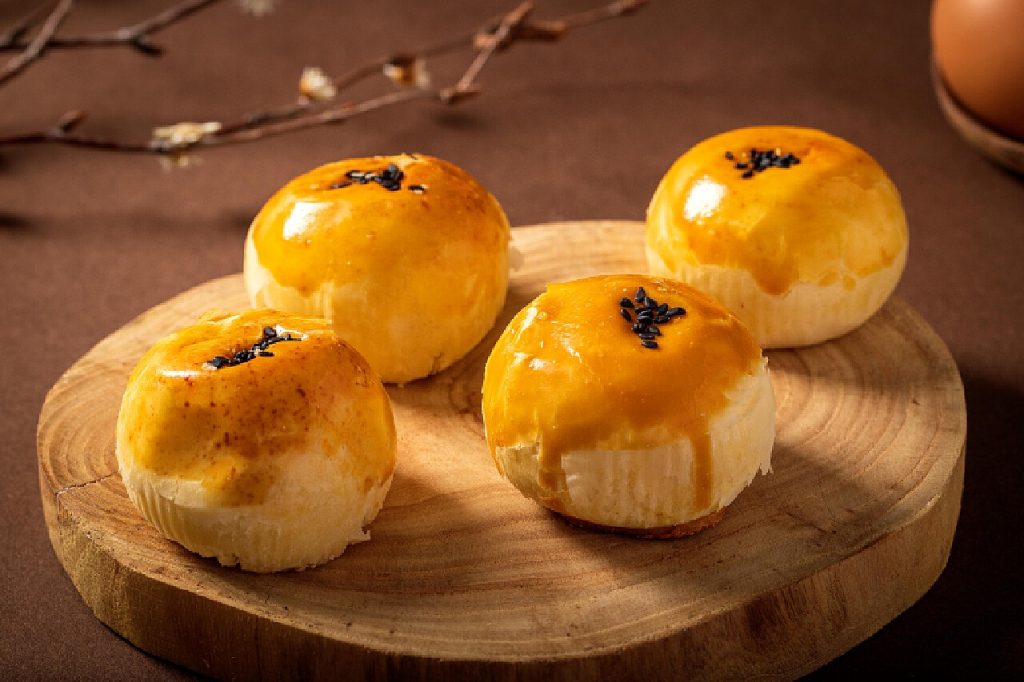Embarking on a culinary journey to create the quintessential Chinese dessert, we turn to the delicate art of making Salted Egg Yolk Pastries. This traditional treat, known for its rich flavor and flaky texture, is a beloved staple during festive seasons and a symbol of artisanal craftsmanship in the realm of sweets.
Creating the Red Bean Paste Filling:
The journey begins with the heart of the pastry—the red bean paste. For those who desire authenticity in every bite, crafting your own red bean paste is a rewarding endeavor. Start by boiling honey-soaked red beans with water until they soften, a process that transforms the hard beans into a tender filling.
Once the beans are sufficiently softened, drain the water until the paste begins to form. Allow the beans to simmer and absorb the remaining moisture before returning them to the heat. Stirring consistently and drawing circles in the mixture will coax the paste from the beans, resulting in a textured red bean paste with the skin intact.
For convenience, store-bought red bean paste is an acceptable substitute, particularly oil-infused varieties that ensure a moist pastry post-baking.
Incorporating Butter into the Red Bean Paste:
When the red bean paste has thickened, blend in unsalted butter. The mixture will initially thin but persevere until the paste reforms into a cohesive mass. Spread the paste out to cool, covering it with plastic wrap to prevent drying.

Preparing Salted Egg Yolks:
Salted egg yolks are another cornerstone of this pastry. To select the best eggs, one could refer to the detailed guide provided at the 06:25 mark in the video. Upon separating the yolks, remove the filmy outer layer to eliminate any unwanted fishy taste. Soak the yolks in corn oil to ensure they remain moist throughout the baking process.
Baking the Salted Egg Yolks:
Preheat your oven to 180°C (356°F) and bake the oil-soaked yolks until they are semi-set and glistening with oil. Allow them to cool completely in the pan, which ensures they cook through evenly.
Assembling the Pastry:
Divide the cooled red bean paste into 20 portions, each weighing approximately 25 grams. Encase each salted egg yolk with the red bean paste, then chill in the refrigerator to firm up, making them easier to handle.
Making the Pastry Dough:
For the dough, emulsify lard with hot water using a hand whisk. This process ensures a consistent texture, as the softness of lard can vary with room temperature. Combine all the dry ingredients in a mixing bowl and integrate the emulsified lard and cold water. Knead until the dough is smooth and elastic.
Why mix medium and low-protein flours for the pastry? The answer lies at the 12:12 timestamp in the video, detailing the balance of flours needed for the perfect texture.

Rolling and Resting the Dough:
After kneading, the dough should be elastic enough to cling to the dough hook of a stand mixer without falling. Rest the dough, covered with plastic wrap, for 30 minutes. This resting period allows the gluten to relax, making the dough more pliable for the subsequent layering process.
Creating the Flaky Layers:
Prepare the oil dough by mixing low-protein flour with room-temperature lard. The warmth of your hands will soften the lard, allowing it to blend seamlessly with the flour.
Divide both the oil dough and the main dough into 20 equal portions. Encase the oil dough within the main dough, following the video instructions at the 25:50 mark for the wrapping technique.
Roll out the dough, fold, and rest it twice, creating the signature layers of the pastry. After the final rest, fill each piece with the red bean and egg yolk mixture, ensuring the filling is well-enclosed.
Baking to Perfection:
Preheat your oven once more to 180°C (356°F). Brush the pastries with egg wash and sprinkle sesame seeds on top before baking. Bake until the pastries are golden and the egg yolk centers are set, approximately 30 minutes.
Upon cutting into the warm pastries, the edges of the filling should be moist—a sign of a perfectly baked Salted Egg Yolk Pastry. It is normal for salted egg yolks to have a slightly firmer center, which will soften after a day or two at room temperature.

